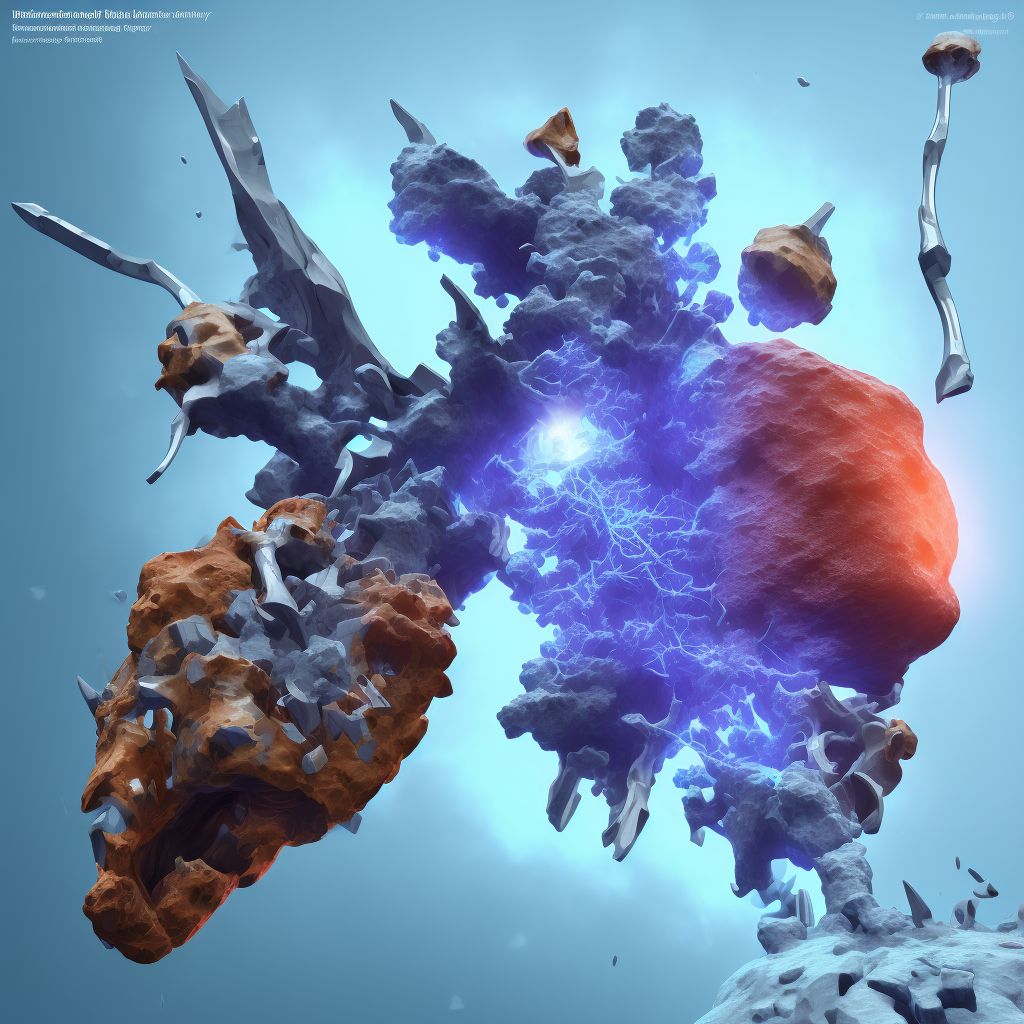
Nondisplaced fracture of unspecified tibial tuberosity, subsequent encounter for closed fracture with nonunion Save
ICD-10 code: S82.156K
Disease category: S82.156: Nondisplaced fracture of unspecified tibial tuberosity
Nondisplaced Fracture of Unspecified Tibial Tuberosity: Understanding the Subsequent Encounter for Closed Fracture with Nonunion
When it comes to tibial tuberosity fractures, a subsequent encounter for closed fracture with nonunion can be a challenging condition. This article aims to shed light on the nature of a nondisplaced fracture of the unspecified tibial tuberosity and its subsequent encounter, without discussing treatment options.
A nondisplaced fracture refers to a break in the bone that doesn't result in significant separation or misalignment. In the case of an unspecified tibial tuberosity fracture, the specific location of the fracture is not mentioned, making it essential to consult a medical professional for a thorough examination and diagnosis.
When a nondisplaced fracture of the tibial tuberosity doesn't heal correctly, it can lead to a condition called nonunion. Nonunion refers to the failure of the fractured bone to heal within the expected timeframe. However, it's important to note that a subsequent encounter for a closed fracture with nonunion implies that the fracture has been treated initially and is now being reassessed.
- Symptoms: Patients experiencing a subsequent encounter for closed fracture with nonunion may continue to experience pain, limited mobility, or swelling in the affected area. These symptoms may persist despite the initial treatment.
- Diagnosis: A medical professional will conduct a thorough evaluation, including a physical examination and possibly imaging tests such as X-rays or MRI scans. These diagnostic tools help assess the extent of the nonunion and its impact on the patient's overall well-being.
- Complications: While this article does not discuss treatment options, it is worth noting that if left untreated, nonunion can lead to chronic pain, functional impairment, and potential complications like infection or deformity.
It is crucial for individuals experiencing a subsequent encounter for closed fracture with nonunion to seek appropriate medical attention. Remember, this article provides general information and is not a substitute for professional medical advice. Consult a healthcare provider to discuss your specific situation and explore the available treatment options.
In conclusion, a nondisplaced fracture of the unspecified tibial tuberosity, subsequent encounter for closed fracture with nonunion, requires careful evaluation and treatment. If you or someone you know is experiencing this condition, it is essential to consult a medical professional for an accurate diagnosis and appropriate care.
Treatment of Nondisplaced fracture of unspecified tibial tuberosity, subsequent encounter for closed fracture with nonunion:
Treatment Options for Nondisplaced Fracture of Unspecified Tibial Tuberosity: A Guide
A nondisplaced fracture of the unspecified tibial tuberosity, subsequent encounter for closed fracture with nonunion, can be a challenging condition to deal with. However, with the right treatment options, patients can recover and regain their quality of life. Here are some effective treatment opt...
To see full information about treatment please Sign up or Log in